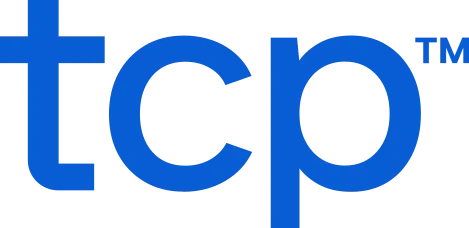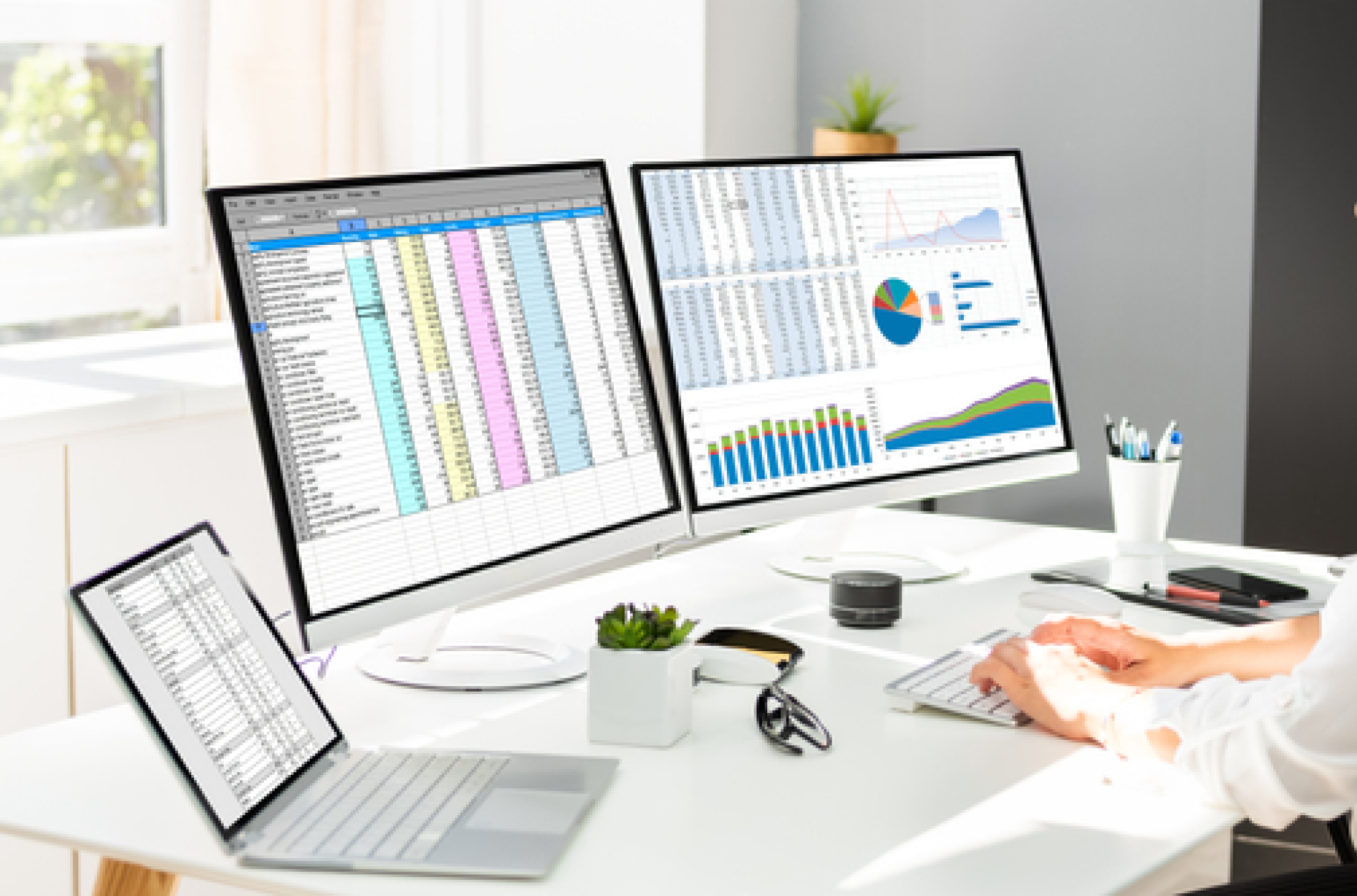Time tracking is a core part of managing any workforce, but not all methods are created equal.
Spreadsheets may be where your team starts, but if you plan on growing, they’re probably not where you need to stay. As your workforce matures, projects get more complex, and compliance demands increase, time tracking follows one of two paths:
- Strategic asset (with the right time tracking system)
- Strategic liability
In this guide, we’ll break down the key differences between time tracking with spreadsheets versus time tracking software, the pros and cons of each, and how to decide which solution fits your team best. Along the way, we’ll highlight use cases across industries like K-12 education, healthcare, public safety, and more.
What’s the difference between time tracking spreadsheets and software?
Before diving into detailed comparisons, it helps to understand how these two approaches work at a basic level:
- Spreadsheet for time tracking – Manual tools. Flexible, but error-prone.
- Software – Automates employee time tracking. Comes with an upfront investment.
What you choose affects more than just your time and labor tracking process — it shapes compliance, payroll, productivity, and team trust across every industry, from education and healthcare to hospitality and construction. If your spreadsheet for time tracking is causing delays or compliance concerns, it may be time to switch.
What is a time tracking spreadsheet?
Time tracking spreadsheets are typically Excel or Google Sheets templates that record employee hours. Employees manually input when they clock in, take breaks, and clock out.
These spreadsheets might also capture task notes or project codes. They are often submitted via email or uploaded to a shared drive. They’re popular because they’re low-cost and familiar.
But if you use an Excel spreadsheet for time tracking, you’re relying entirely on accurate manual input, plus the internal training across teams to keep them organized and error-free.
What is time tracking software?
Wondering what time tracking software actually does?
Time tracking software automates the entire process. Before you say, “Oh gosh, promises of more automation, please spare me,” here’s how it works. Employees clock in and out via a mobile app, kiosk, or web interface — any breaks, overtime, and PTO are tracked in real-time. Approvals and corrections can happen directly in the system, with built-in timestamps, audit trails, and automatic calculations.
The main perks of employee time tracking software are about simplification — it’s built to scale as your teams and processes do, integrates with payroll and scheduling, and works within the parameters of compliance. Less human intervention means a smoother time tracking system.
Key differences between time tracking spreadsheets vs. software
If you’ve been managing time tracking, knowing what an Excel spreadsheet can do versus a dedicated software isn’t rocket science. However, for all the variety in capabilities each time tracking method has, there are a few key differences you should care about most:
1. Automation and accuracy
Excel spreadsheets still require manual entry and math, regardless of how advanced your formulas are. Software calculates hours, flags discrepancies, and reduces human error.
This is especially helpful in healthcare and construction time tracking software where fatigue, overtime, or back-to-back shifts can lead to compliance violations if not monitored by time tracking.
2. Real-time visibility
Spreadsheet data is often delayed or disconnected. Software updates live, giving managers insight the moment someone clocks in or approaches overtime.
In higher education and K-12 time tracking software, this gives school administrators a clearer view across roles and departments and reduces time spent on staffing fulfillment.
3. Compliance and audit-readiness
Software helps you maintain labor compliance, union rules, and overtime regulations. Spreadsheets leave too much room for oversights, which can be costly.
This difference is critical for government agencies and public safety teams who must always maintain audit-ready records.
4. Payroll and system integrations
Software can sync with payroll providers, eliminating double entry. Spreadsheets often require someone to export, apply formatting changes, and manually upload.
In industries like hospitality and retail with high employee turnover and a rotating pool of teams, syncing with payroll management solutions reduces onboarding headaches and makes adjusting for pay differentials seamless.
5. Accessibility and employee trust
With time tracking software, employees can view their hours, verify pay, and fix errors proactively. Spreadsheets require a high degree of trust because they’re hard to monitor and create extra admin work for everyone involved.
Accessibility is especially valuable for field workers in construction and manufacturing, where job codes switch, job costing is pivotal to margins, and time tracking becomes more complex.
Pros and cons of spreadsheets vs. time tracking software
Both spreadsheets and software offer different advantages depending on your organization’s size, structure, and industry needs.
You might prioritize speed and flexibility if you’re in hospitality or retail. For government or healthcare teams, audit-ability and accuracy may be non-negotiable.
The sections below break down where each method excels — and where they fall short — so you can choose the right fit for your teams.
Pros of using a spreadsheet for time tracking
Low cost or free to use
Templates are readily available and cost nothing to implement, making them attractive for small teams, startups, and early-stage programs in K-12 or nonprofits.
Simple to set up
No installation, training, or IT support required. Great for short-term use or limited-scope operations.
Familiar format
Most employees already know how to use Excel or Google Sheets, reducing the learning curve.
Flexible for custom tracking
Spreadsheets can be customized to track niche needs, like department codes or project notes, though this adds complexity.
Useful as a temporary stopgap
For organizations mid-transition or conducting short-term pilots, spreadsheets can be a workable interim solution.
Cons of using a spreadsheet for time tracking
Prone to manual error
Mistyped hours, incorrect formulas, and forgotten break times are standard — especially in fast-paced environments like healthcare or retail, these can multiply payroll errors down the line.
No real-time visibility
Managers only see data after submission, which limits responsiveness to absenteeism or overtime risks.
No built-in compliance safeguards
Spreadsheets don’t alert you to missed breaks, labor law violations, or excessive hours — leaving public safety and healthcare teams vulnerable to audit risk.
Version control nightmares
Email-based submission workflows often lead to conflicting or outdated versions, especially in multi-site operations like manufacturing or government.
Labor inefficiencies
HR and payroll teams spend hours reviewing, correcting, and manually entering data into payroll systems. According to APQC, resolving payroll issues can take 5–10 days in low-performing orgs.
Easy to manipulate
Without user authentication or restrictions, spreadsheets are susceptible to buddy punching, inflated hours, and other types of time theft.
Pros of using software for time tracking
Real-time time tracking insights
Managers and supervisors can monitor clock-ins, shift compliance, and overtime thresholds as they happen, which is crucial for public safety, healthcare, and construction crews.
Built-in compliance support
Alerts flag when breaks are missed, hours exceed limits, or entries violate labor rules. Audit logs help meet standards like FLSA, CBAs, and grant funding audits.
Automated calculations
Software automatically calculates hours, breaks, PTO, overtime pay, and shift differentials. Reducing human inputs frees up time for payroll teams while preventing costly errors.
Scalable across sites and roles
Supports centralized management of complex staffing structures such as district-wide K-12 systems, multi-location retailers, or higher ed campuses with various college departments.
Integrates with payroll and HR systems
Time tracking software saves time by syncing directly with systems like ADP, Paychex, or in-house payroll. Reduces redundancy and lowers the risk of duplicate data entry.
Self-service tools for employees
Workers can review their time, request corrections, and manage leave balances without going through HR — reducing errors and improving trust.
Mobile and kiosk access
Software supports mobile clock-ins for field workers, shift schedules for public safety teams, and location-specific access for manufacturing or construction sites.
Improves payroll processing efficiency
Studies have shown that companies using an integrated time tracking software with payroll integrations can exceed revenue targets by as much as 7%.
Cons of using software for time tracking
Higher upfront investment
Software typically comes with subscription or implementation costs.
Requires onboarding
Teams may need training to learn the system.
Needs IT or vendor setup
May require integration with existing HR/payroll systems.
How to switch from spreadsheets to time tracking software?
You’re not alone if you’re still using spreadsheets to track employee time. But chances are, you’re starting to feel the cracks: delayed payroll, frustrated teams, and growing compliance risk.
We’re a bit biased (as a company arguing for why you need employee time tracking software), but switching to time tracking software is a high leverage move that’s worth the investment. Here’s how you can do it right the first time:
- Assess your current system – Where do errors and delays happen? Who spends the most time managing timesheets? On a week to week or month to month basis, how many issues are you having with time tracking?
- Identify integration needs – Consider what payroll, scheduling, and HR systems the software needs to connect with.
- Choose the right software – Look for solutions that support your team size, complexity, and compliance requirements. Public safety teams may need shift templates, while retail and hospitality teams may need mobile kiosks.
- Roll out in phases – Start with a pilot group before going org-wide.
- Train and support your team – Once you’ve worked out the kinks in your pilot, provide training and documentation to ease the transition.
Why TCP Software is your best next step from time tracking spreadsheets
Here’s the part where we do our shameless plug. At TCP, we know you don’t just need a time tracker. You and your organization deserve a complete platform built for everything time tracking touches: payroll, compliance, operations, etc.
You need visibility and ease of use across every shift, location, and employee type, so we provide it. Whether you’re managing part-time aides in a school district, rotating teams in a hospital, or crews across job sites, we’ve got you covered.
TCP Software’s employee scheduling and time and attendance solutions have the flexibility and scalability to suit your business and your employees, now and as you grow.
From TimeClock Plus, which automates even the most complex payroll calculations and leave management requests, to Humanity Schedule for dynamic employee scheduling that saves you time and money, we have everything you need to meet your organization’s needs, no matter how unique. Plus, with Aladtec, we offer 24/7 public safety scheduling solutions for your hometown heroes.
Ready to learn how TCP Software takes the pain out of employee scheduling and time tracking? Speak with an expert today.


